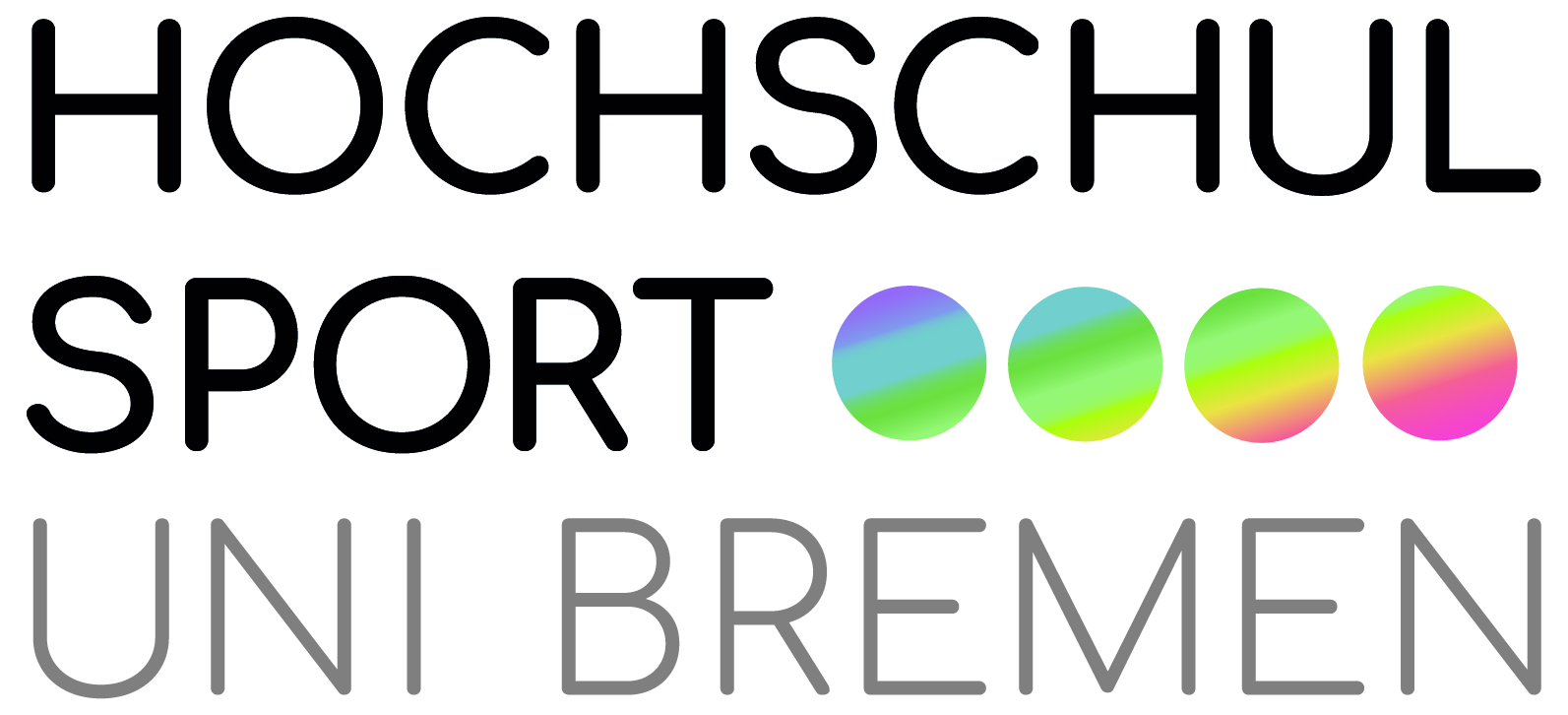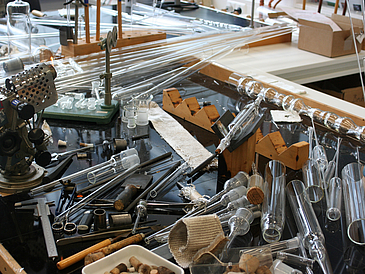Roswitha Krebs-Goldbecker is in charge of her own little glass domain at the University of Bremen. Her working materials are extremely fragile. On her workbench you will find dozens of glass tubes and rods in all shapes and sizes. A little bit hidden way in the basement of the NW2 building, the master craftswoman builds to order glass apparatus for the University’s various laboratories. Her requests for special glass apparatus come from the scientists working, for example, as teachers and researchers in the Faculties of Biology/Chemistry and Production Engineering.
“You have to understand the properties of glass to know what it is capable of”, says Krebs-Goldbecker. She heats glass rods and tubes over hot flames of a burner that reaches temperatures of up to 2,000°C, making both simple as well as complicated glass apparatus in numerous small work steps that call for continual turning, glass blowing, spin-coating and smelting processes: from small spatulas to highly complex systems. As in all crafts, the same is true here: You can’t make an omelette without breaking eggs. In this case—glass eggs. “Especially very small items measuring just a few centimeters can prove to be incredibly complicated and time-consuming.”
From Craft back to University
Krebs-Goldbecker came to the University of Bremen in 1990 after training as a master craftswoman of precision glass apparatus at the University of Bochum and three years of practicing her trade. Since then she has been handling customized orders for special experimental set-ups. The scientists first have to explain to her exactly what is required. Krebs-Goldbecker has to check for feasibility and develop solutions before going ahead and producing the handcrafted one-off pieces. In the course off her work she uses glass tubes made of Duran laboratory-grade glass with diameters of between 3 mm to 150 mm. For some very special orders she works with silica glass that displays high resistance to chemical attack. Every piece that Roswitha Krebs-Goldbecker produces is custom-made.
Caution: Explosion Hazard
Krebs-Goldbecker also carries out repairs on laboratory equipment. Her expertise is high in demand, especially when it comes to existing special items where only the master craftswoman is able to reconstruct and install the individual parts and pieces needed. A precondition is that the parts to be repaired are absolutely clean and grease-free. Why? Because of the high risk of explosion. “When a request comes in for the smelting of filled glass ampoules, my first question is always: inflammable, toxic, explosive? After all, during the work procedure the substances come into contact with flames that have a temperature of between 1,500 and 2,000°C. That could be asking for trouble!” Once the glass has been molded into the correct shape, the finished vessel or item of apparatus must spend some time in the furnace at a temperature of 560°C. “During the work process, thermal stresses occur within the glass. These stresses are relieved by the tempering process in the furnace, and the finished product then remains stable through changes of temperature”, Krebs-Goldbecker explains.
For more information on the glass workshop go to: http://www.fb2.uni-bremen.de/de/glastechnik




